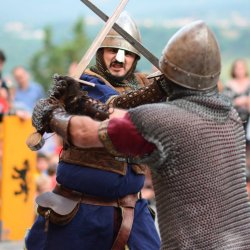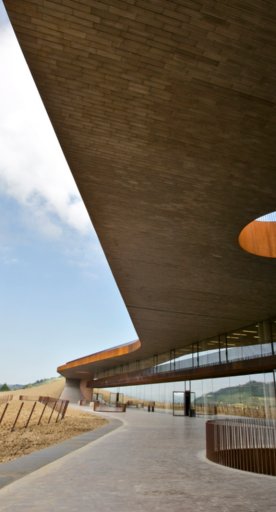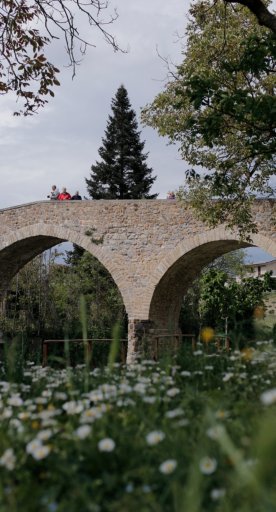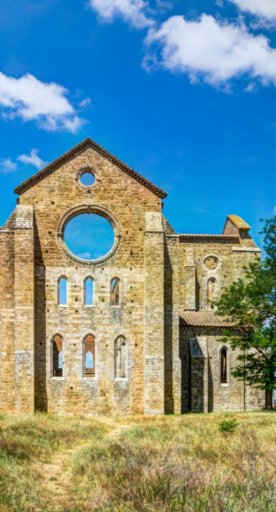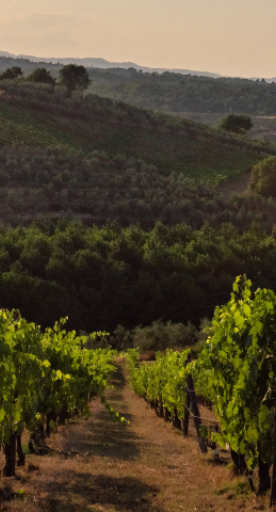National Archaeological Museum of Florence: 10 reasons to go
Discover unparalleled archaeological treasures in Florence
The National Archaeological Museum of Florence is absolutely worth visiting! Located in Florence’s Palazzo della Crocetta, the museum dates to the age-old Medici and Lorraine art collections, featuring treasured Etruscan and Roman artifacts from archaeological digs in Tuscany, not to mention beautiful Egyptian and Greek collections. There are countless reasons to include this museum in your Florentine visit, but here are 10 to get you started.
-
1.The Egyptian Museum
-
2.The Chimera of Arezzo
-
3.The Orator
-
4.Larthia Seianti Sarcophagus
-
5.Amazons' Sarcophagus
-
6.The Pesaro “Idolino”
-
7.The François Vase
-
8.The Minerva of Arezzo
-
9.The Medici Hallway (Il Corridoio Mediceo)
-
10.The Archaeological Garden
The Egyptian Museum

Did you know that in 1829, Ippolito Rosellini worked alongside Jean-François Champollion, the man who translated hieroglyphics? The Italian Egyptologist returned with a collection treasures, including canopy vases, sarcophagi, statues, mummies, stele (carved slabs), a wooden chariot from Tutankhamen’s time and various wooden and bamboo objects (all installed in the museum in the late 19th century). Both children and adults adore perusing the captivating rooms set up to evoke an Egyptian temple or Pharaoh’s tomb, featuring faux columns, hieroglyphics and a ceiling painted to resemble a starry night.
The Chimera of Arezzo

If this famous Etruscan bronze statue could speak, its roar would attract hundreds of visitors worldwide. Found and sold in Arezzo in 1500 (hence its name), this large bronze statue features a lion’s head and body, a goat’s head on its back and a serpent’s tail. This mythological beast is Bellerofonte’s enemy, the hero who rides winged Pegasus. On the chimera’s leg you'll see the Etruscan inscription tincsvil, meaning "gift or offering," in this case to the god Tinia, the Etruscan Zeus.
The Orator

In the same room, you’ll find another famous bronze statue, the Orator, or Arringatore, a man dressed in a typical Roman toga wearing fine sandals and raising his arm as if to silence a room. This statue also features an Etruscan inscription, indicating the Arringatore’s real name: Avile Meteli. His pose and clothing suggest his role as an important political figure, perhaps in Perugina in the 2nd century B.C.E. Isn’t it incredible how much we can learn from a statue? Like the chimera, the Arringatore merits close observation: this work is a true masterpiece of Etruscan and ancient art.
Larthia Seianti Sarcophagus

Larthia Seianti was a wealthy woman from Chiusi (located in southern Tuscany). She was buried in a spectacular sarcophagus depicting her positioned on a kline, a bed used by Etruscans during banquets. Her clothing is sumptuous and colorful, not to mention her striking ornamentation and jewelry. Beside the sarcophagus, other objects were found in her tomb, including small perfume holders, clips, a metal ear-cleaning device and Charon’s obolus, a coin used as payment for passage to the afterworld.
Amazons' Sarcophagus

There are other Etruscan sarcophagi worth seeing, including one dedicated to the Amazons. It takes its name from the painting depicted on its four sides: the battle between men and Amazons, the warrior women of Greek mythology. The scene is highly dynamic; not a single scene is repeated in the entire work, making the overall image truly astonishing.
The Pesaro “Idolino”

This Roman bronze statue was discovered in Pesaro in 1500. The small statue depicts a nude youth in a classical pose similar to that of Greek statuary. Upon discovery, the statue was found with bits of vine in his hand, causing his identification as Bacchus, the god of wine. He thus became an idolino (little idol) and was mounted on a bronze base decorated with wine-related motifs. Today, scholars sustain that the figure is not a god: he is simply a young man holding a vine for hanging lanterns, which were used to illuminate banquets in the Roman villa in which he was found. God or mortal, this splendid work is nonetheless a precious and cherished example of Roman art.
The François Vase

This treasure is the world’s most famous Greek vase. Its name, François, stems from the 19th-century explorer who found it in a tomb near Chiusi. It is a large krater, a type of vase used to hold large amounts of wine during banquets (from which guests drew wine for their own cups). Its fame is due to the particular black figure frieze narrating important mythological events, including the funeral games for the death of Patroclus, the return of Theseus from Crete after his victory over the Minotaur and the marriage of Peleus and Thetis. Each figure and object is labeled in Greek, as are the artist’s names: Kritias and Ergotimos.
The Minerva of Arezzo

Like the chimera, the Minerva is another large Etruscan bronze statue. In Roman times, it adorned a room of the domus di Arretium. Discovered in Arezzo in 1541, it was immediately acquired by Cosimo I de 'Medici, who placed it in his studiolo inside Palazzo Vecchio. The goddess of wisdom and war is a hollow bronze figure realized using the cera persa (melted wax) technique. Restored by Carradori in 1785, the statue was given a wooden pole to stand, as it was also missing its right arm and part of its robe. After three centuries, the need to replace the wooden pole led to the restoration of the statue’s original appearance.
The Medici Hallway (Il Corridoio Mediceo)
The museum structure belonged to the Medici family in the 17th century. To this end, a corridor contains one of the family’s best-kept secrets: a girl never seen public. To participate in mass at the nearby Church of Santissima Annunziata, they built a narrow, concealed corridor stretching from the museum’s second floor to an opening that overlooked the church. Perhaps there, hidden from other participants, she could momentarily distract herself from her status as prisoner inside her own home. The Medici Corridor is only open on select occasions.
The Archaeological Garden

Here, visitors can admire a great variety of funeral monuments used by Etruscans, including a tumulus and chamber and dado tombs.
The museum entrance is located on via Capponi in piazza Santissima Annunziata.
A little-known secret: you can also reserve tickets for the Galleria dell'Accademia or the Uffizi Gallery at the archaeological museum office.
For more information, visit museoarcheologiconazionaledifirenze.com.
Original guest post written by Marina Lo Blundo, an archaeologist and travel lover who blogs about her travels around the world.

